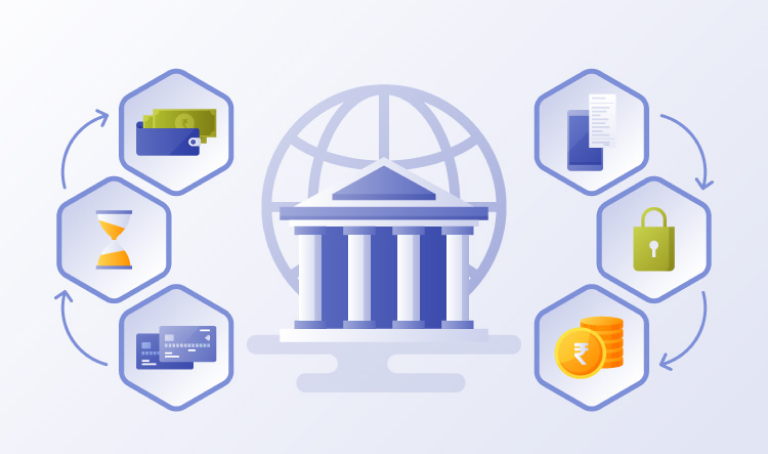The financial services industry has undergone a significant transformation with the advent of core banking platforms. These sophisticated systems play a pivotal role in reshaping the way traditional banking operations are conducted and have become instrumental in the rise of digital banking. In this article, we will explore the evolution, functionalities, benefits, challenges, and the future of core banking platforms.
Evolution of Core Banking Platforms
Traditional banking relied heavily on legacy systems that were often siloed, inflexible, and hindered innovation. The emergence of core banking platforms marked a departure from this conventional approach. These platforms evolved in response to the changing needs of the financial sector, driven by technological advancements, customer expectations, and regulatory demands.
Earlier iterations of core banking systems were primarily on-premise solutions that required substantial investments in hardware and infrastructure. However, the modern landscape has witnessed a shift towards cloud-based core banking platforms, offering scalability, cost-effectiveness, and improved accessibility.
Functionalities of Core Banking Platforms
Integrated Banking Operations:
The core banking platform serves as a centralized hub, integrating various banking operations such as account management, transactions, loans, and customer relationship management. This integration streamlines processes and enhances operational efficiency.
Multi-Channel Accessibility:
The rise of digital banking has necessitated multi-channel accessibility. Core banking platforms enable customers to access services seamlessly through diverse channels, including online banking, mobile apps, ATMs, and branches.
Real-Time Processing:
Unlike legacy systems that often involved batch processing, modern core banking platforms facilitate real-time transaction processing. This not only improves the customer experience but also enhances the accuracy and speed of financial transactions.
Data Management and Analytics:
Core banking systems are equipped with robust data management capabilities. They store, process, and analyze vast amounts of customer data, providing valuable insights for personalized services, risk management, and decision-making.
Benefits of Core Banking Platforms
Enhanced Customer Experience:
Core banking platforms contribute to a seamless and personalized customer experience. Real-time processing, integrated services, and multi-channel accessibility empower customers to manage their finances conveniently.
Operational Efficiency:
By consolidating various banking functions into a unified platform, core banking systems eliminate redundancies and enhance operational efficiency. This leads to quicker response times, reduced errors, and improved overall productivity.
Scalability and Flexibility:
Cloud-based core banking platforms offer scalability, allowing financial institutions to adapt to changing demands without significant infrastructure investments. The modular nature of these systems also provides flexibility for customization based on specific requirements.
Regulatory Compliance:
Core banking platforms play a crucial role in ensuring regulatory compliance. These systems are designed to adhere to evolving regulatory standards, helping financial institutions avoid penalties and maintain the trust of regulators.
Challenges in Implementing Core Banking Platforms
Integration Challenges:
Transitioning from legacy systems to modern core banking platforms can pose integration challenges. Ensuring a smooth migration without disrupting ongoing operations requires meticulous planning and execution.
Data Migration Risks:
The migration of vast amounts of data from legacy systems to a new platform involves inherent risks. Data accuracy, completeness, and security must be prioritized to prevent potential disruptions and safeguard customer information.
Resistance to Change:
Employees accustomed to traditional banking processes may resist the shift to a new core banking platform. Adequate training and change management strategies are essential to overcome resistance and ensure a smooth transition.
The Future of Core Banking Platforms
Artificial Intelligence and Automation:
The integration of artificial intelligence (AI) and automation is poised to redefine core banking functionalities. AI-powered analytics, chatbots, and automated processes will enhance customer service, risk management, and decision-making.
Blockchain Integration:
The adoption of blockchain technology in core banking platforms holds the potential to revolutionize security, transparency, and transaction efficiency. Blockchain can streamline processes such as identity verification, payments, and smart contracts.
Open Banking Ecosystems:
Core banking platforms are becoming key enablers of open banking ecosystems. Through secure APIs, these platforms allow third-party developers to build innovative financial products and services, fostering collaboration and competition within the industry.
Conclusion
Core banking platforms have emerged as the backbone of modern banking, driving innovation, efficiency, and customer-centricity. The evolution from legacy systems to cloud-based, integrated platforms signifies a paradigm shift in the financial services landscape. While challenges exist in the implementation process, the benefits of enhanced customer experience, operational efficiency, and regulatory compliance outweigh the hurdles.
As we look to the future, the continued integration of emerging technologies such as AI, blockchain, and the development of open banking ecosystems will further shape the trajectory of core banking platforms. Financial institutions that embrace these advancements are poised to thrive in the dynamic and competitive landscape of the fintech industry.
